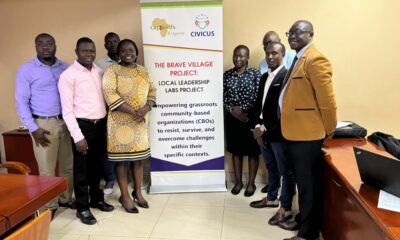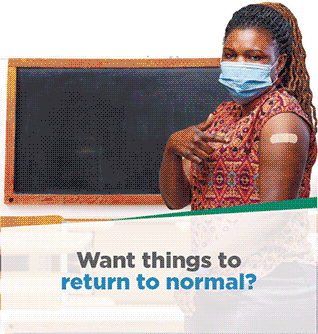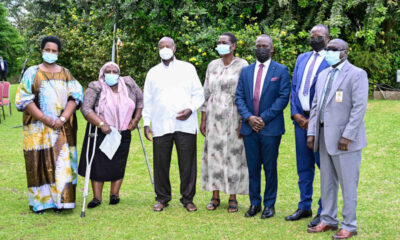News
Donors in new plan to help secondary students complete school
And improving the well-being of Ugandan children
Only 12 percent of all students enrolled under Universal Secondary Education (USE) manage to complete senior four, a situation that condemns many of them to early marriages and unemployment. The inability of many children to complete school and obtain handy skills for life is being cited as one of the major problems that contribute to a cycle of poverty, destitution and a generally poor quality of life for millions of Ugandan children.
It’s out of this awareness that the United States Agency for International Development (USAID), is partnering with other development partners to try to change the state of affairs for Ugandan children.
This week, USAID in collaboration with the European Union, Irish Aid, the United Nations family and the World Bank, unveiled a new plan dubbed the National Action Plan for Child Well-Being, which aims at improving the well-being of Uganda’s children.
The USAID says the sheer size of the young population in Uganda – 58 percent of the total population being under the age of 18, is itself too important a figure to be ignored in national policy formulations as well as in resource allocation.
Apart from poor survival rates in both primary and secondary schools, donors are concerned as well about other grim figures on the well-being of children in Uganda. These include high levels of HIV prevalence among children, high levels of child stunting, lack of access to safe drinking water and as well as the high levels of child pregnancy.
The USAID has anchored the plan’s success on participation by all stakeholders in Uganda including the government, religious and cultural leaders as well as parents who are expected to play a leading role in ensuring the well-being of their children.
The donors argue that Uganda cannot reach vision 2040 or realise the potential rewards of its human capital without investing in critical areas of child development.
Patricia Mahoney, the Charge a’Affairs at the US Embassy in Kampala said: “The plan seeks to call everyone to pay special attention to the well-being of the children of Uganda.”
The plan, which USAID officials prefer to call a National Movement because of the need for participation by nearly every member of Uganda’s society, is backed by American funding to the tune of US$31m which will be spent over a period of two years.
But Mahoney noted that the United States will focus on improving primary literacy, bringing down teenage pregnancy, improving nutrition especially for under five children and help to reduce sexual abuse among children.
Using a host of unpleasant statistics showing the state of children in the country, the donors diplomatically avoided categorising the problem as a national crisis.
Startling figures; High HIV prevalence
Over the past decade, the proportion of children with HIV/AIDS has risen significantly between 2000 and 2013. Currently, UNICEF data shows that 11 percent of all HIV/AIDS cases are adolescents. And whereas donors continue to provide access to free ARV treatment, HIV/AIDS remains the second leading cause of death among adolescents.
The US government wants to put focus on reducing vulnerability to HIV/AIDS among girl children. According to Reed, Ugandan girls are four times more susceptible to getting HIV/AIDS compared to boys.
Stunting
Described as having lower height and weight per age of a child, stunting is one of the major indicators of poor nutrition among Ugandan children. National statistics show a slight improvement from 38% to 33% between 2006 and 2011 respectively. However stunting continues to have an indelible black spot on the poor state of children’s health in Uganda and their capacity to achieve their full potential.
Findings show that Karamoja is worst affected by stunting following by Western Uganda, particularly Kisoro sub-region. Experts say that over-commercialisation of food items, coupled with the poor mentality of parents in those regions has been the major driver of stunting of children.
Low literacy rates
The poor performance of UPE pupils in literacy and numeracy assessments has been documented several times but with no plan from the government to address it.
Three successive surveys conducted by the teacher organisation UWEZO in 2013, 2014 and 2015 show that 67% of all children assessed in Primary 3 to primary 7 were unable to read and solve division problems of a primary 2 class.
Violence against children
Police crime reports show that violence against children, particularly defilement has increased in recent years from 7.360 cases in 2009 to 9,588 cases in 2013 representing 30% increase.
US officials argue that with 25% of adolescent girls getting pregnant, is an unsustainable trend for the country.
Uganda’s Prime Minister Dr. Ruhakana Rugunda said the government under the second national development plan as well as under the vision 2040, is committed to prioritising the cause of children in Uganda.
However, as Leslie Reed, the USAID Mission Director noted, the government commitment is undermined by the challenge of poor resource allocation that deprives critical areas of the population such as children from accessing the requisite funding.
Reed noted as well that Uganda suffers from the problem of implementation to the extent that many consider it the origin of good plans that only get implemented by other countries such as Rwanda.
Comments




















